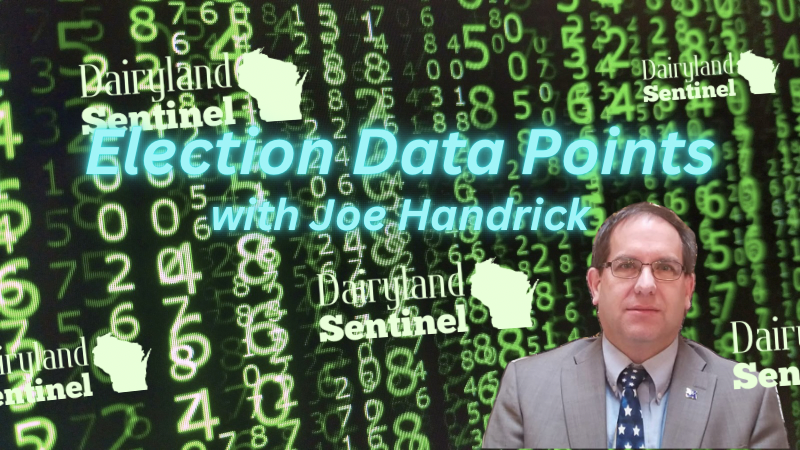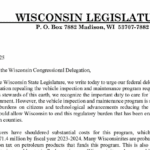By Joe Handrick for Dairyland Sentinel
This marks the third installment in my series examining Wisconsin’s congressional maps and the ongoing debate surrounding their fairness. In my first column, “The Truth About Wisconsin’s Congressional Districts”, I dismantled the narrative that the current map is a Republican-driven partisan gerrymander, pointing out its bipartisan origins in 2011, when even Democrat Tammy Baldwin helped craft it. My second piece, “Don’t Blame the Map, Blame the Candidates”, argued that electoral outcomes in Wisconsin stem more from candidate quality and campaign strategy than from the shape of district lines. Now, I turn to a persistent claim from defenders of Governor Tony Evers’ 2021 redistricting map: that it was a “least-change” effort, mandated by the Wisconsin Supreme Court to minimize disruption. The evidence tells a different story—Evers’ current map was a calculated move to tilt the scales in favor of Democrats.
Let’s start with the map itself. The 2011 congressional map, a product of bipartisan collaboration, balanced populations across districts while maintaining competitive boundaries. Fast forward to 2021, when Evers submitted his proposal under the Wisconsin Supreme Court’s “least-change” directive, which was meant to preserve the core of existing districts with only minor adjustments for population shifts. On the surface, this sounds like a straightforward task—tweak the lines to equalize numbers, and move on. But Evers’ map went far beyond that. In the 1st District, which spans southeastern Wisconsin, the 2011 map was short by just 9,263 people to meet population requirements. A true “least-change” approach would have shifted just enough people into the 1st to achieve equal population.

Instead, Evers made drastic alterations. Instead of adding 9,263 individuals, he added more than 48,000 people from the 4th District, a district that was already short of the target population. This threw Milwaukee’s district into disarray. The three cities (Cudahy, South Milwaukee, and St. Francis) he threw into the 1st district just happened to all be Democratic cities. This wasn’t a minor adjustment; it was a deliberate reshaping. The 1st District, already a competitive area, suddenly became far more Democratic-leaning with the influx of urban voters. The ripple effect was clear: in the 2022 governor’s race, the GOP’s vote share in the 1st District dropped by 4 points, from 53% to 49%, making the 1st a true toss-up district.How ironic that now Evers’ allies are trying to claim that the map he drew is a GOP gerrymander!
Defenders of Evers’ map often lean on a rehearsed excuse: “He had to do it that way—it was a least-change map.” This claim doesn’t hold water. If Evers were truly adhering to the court’s directive, he would have made the smallest possible changes to balance populations, not orchestrated a wholesale transfer of tens of thousands of voters to reshape electoral outcomes. Adding three entire cities to the 1st District wasn’t about meeting population quotas—it was about packing in Democratic voters to dilute Republican strength. The numbers speak for themselves: moving 48,000 people out of one district and into another, when only a fraction of that was needed, is the opposite of minimal change. It’s a strategic overhaul.
This wasn’t an accident or a necessity—it was a choice. Evers, a Democrat, saw an opportunity to redraw lines in a way that would benefit his party, and he took it. The “least-change” label became a convenient shield to mask a partisan agenda. As I’ve noted in my previous columns, Wisconsin’s political landscape is shaped by more than just maps—candidate recruitment, voter turnout, and campaign messaging all play larger roles in election results.
The debate over Wisconsin’s congressional districts isn’t going away. Some are now urging the Wisconsin Supreme Court to intervene before the 2026 elections, hoping to unseat Republican representatives by redrawing the lines yet again. But if we’re going to have an honest conversation about “fairness,” we need to start with the facts. Evers’ map was no innocent “least-change” effort—it was a calculated move to give Democrats an edge. Wisconsin voters deserve better than political sleight-of-hand dressed up as principle.
Joe Handrick is a political analyst and longtime observer of Wisconsin politics. He can be seen on X @JoeMinocqua
Copyright © 2025 – Dairyland Sentinel












